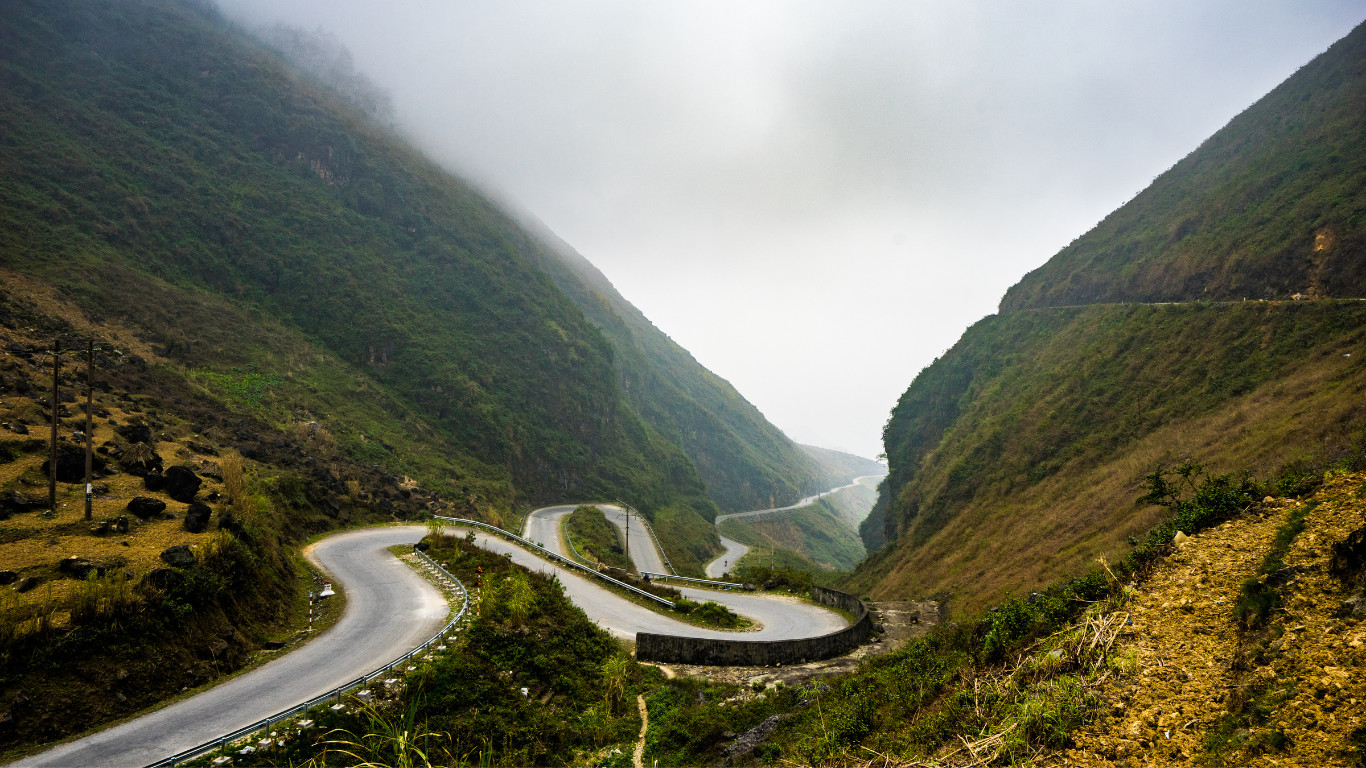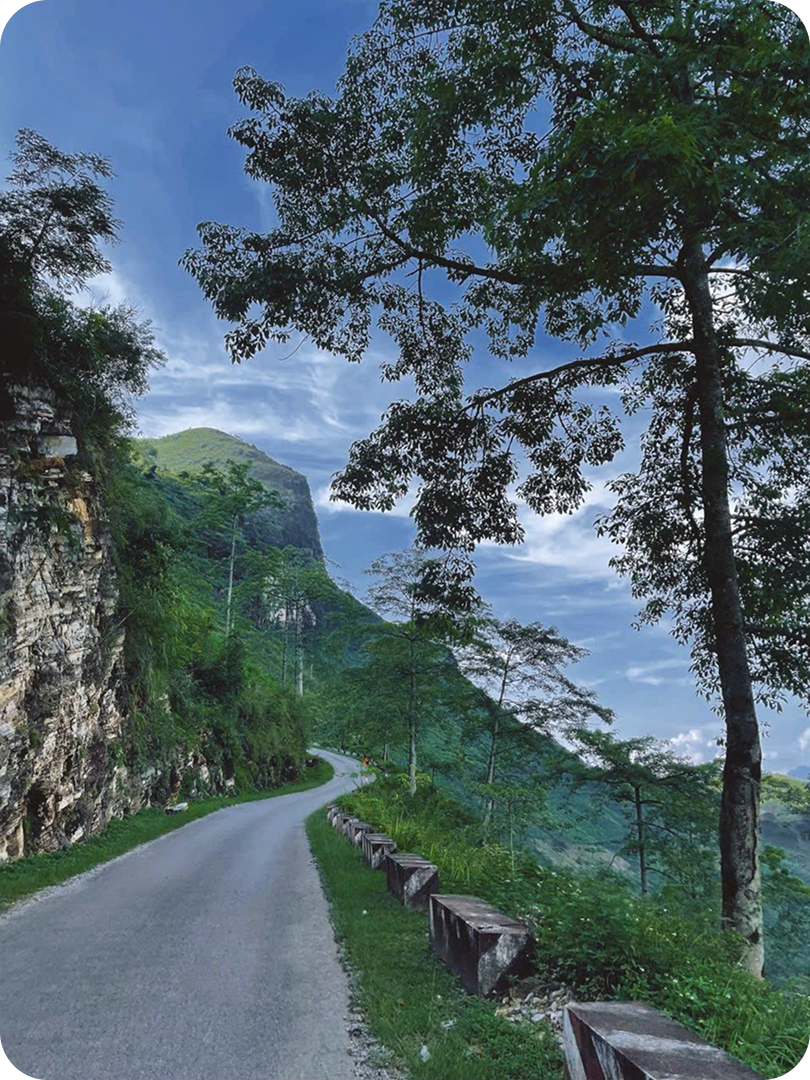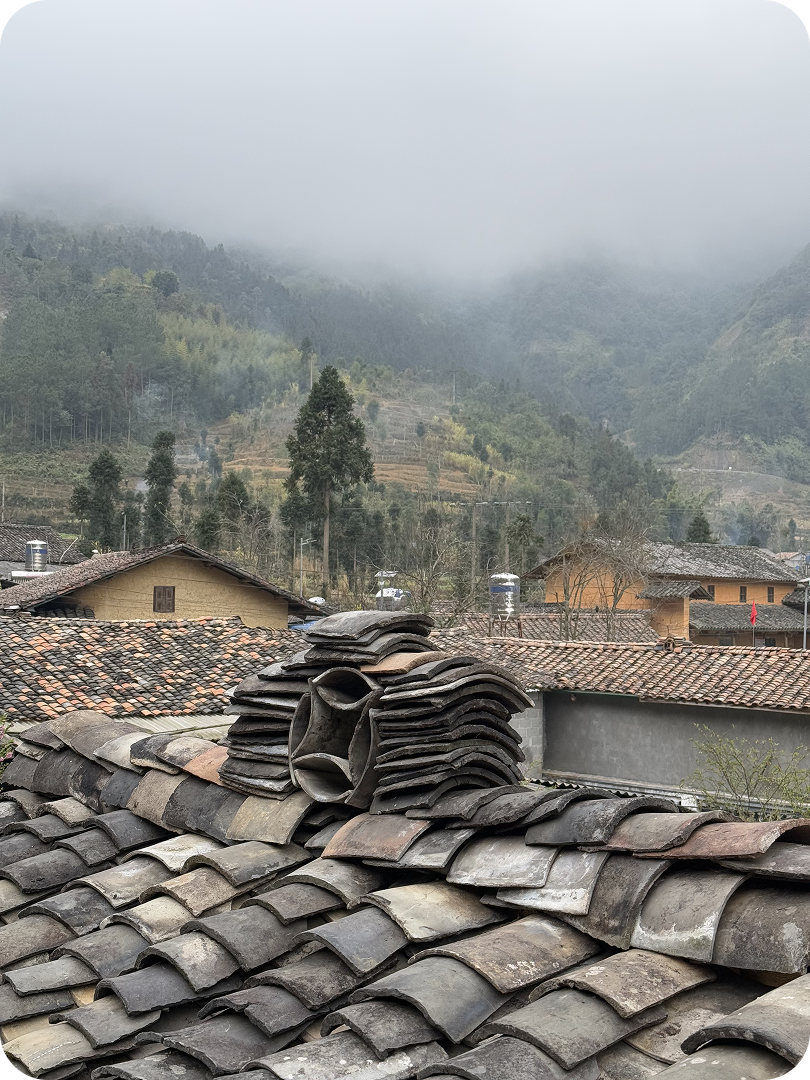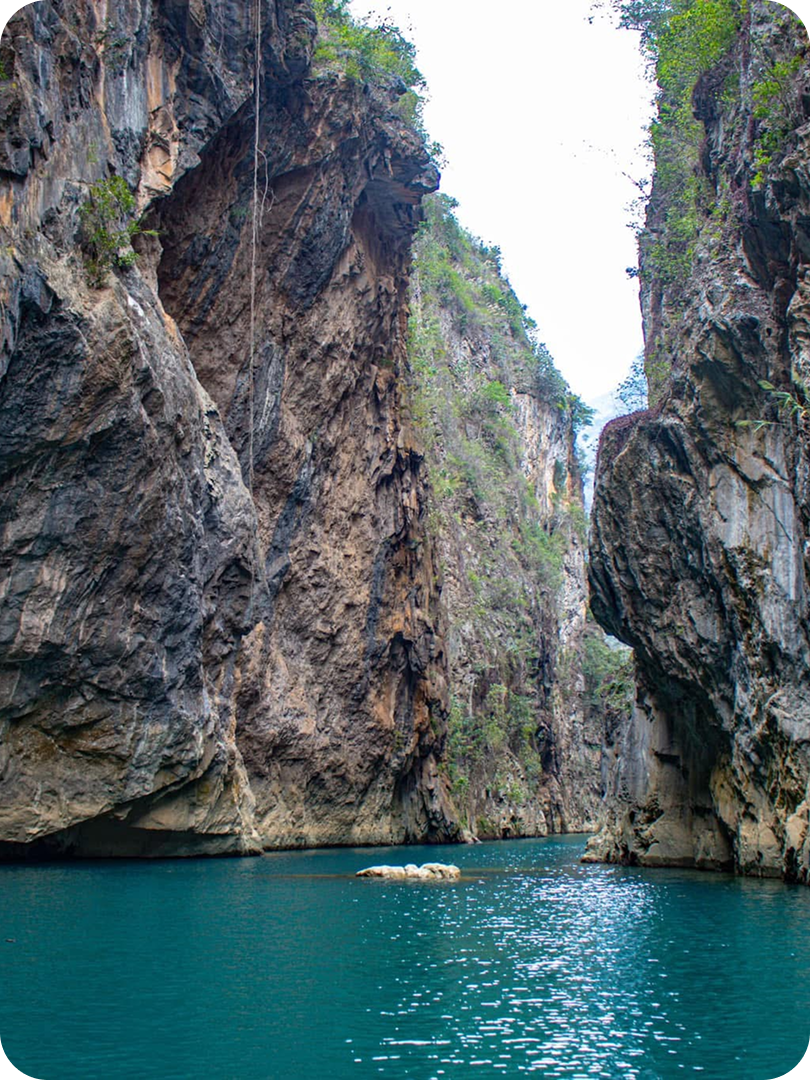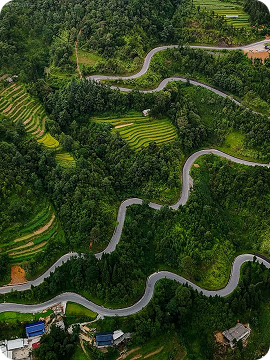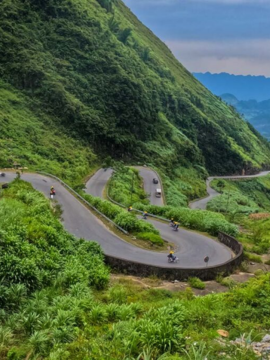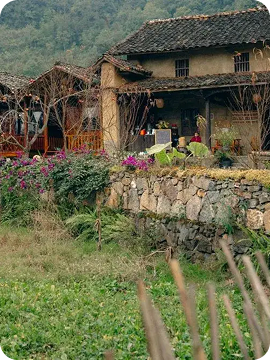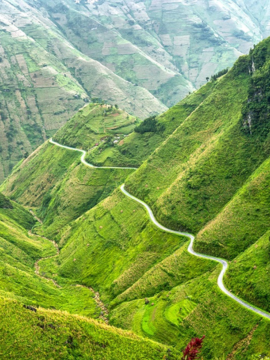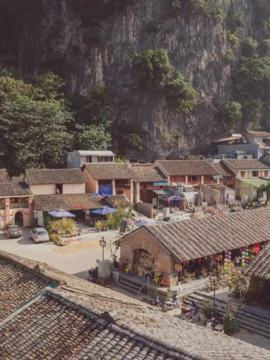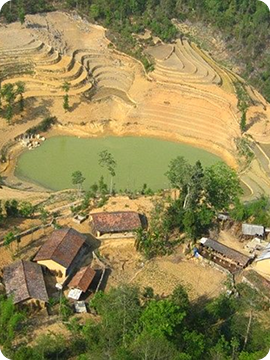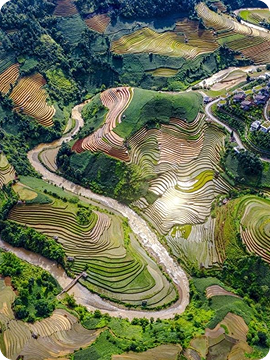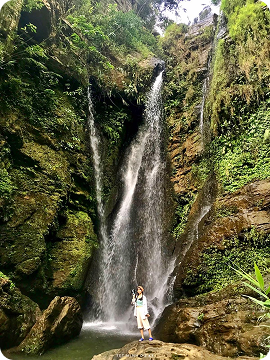Tham Ma Pass is one of the most iconic stretches along the Ha Giang Loop, famous for its dramatic S-shaped bend and limestone cliffs. Winding through the Dong Van Karst Plateau, this high-altitude pass offers stunning views, raw cultural encounters and a glimpse into daily H’Mong life. In this Phieu Travel‘s guide, discover how to make the most of your visit.

1. Get to know Tham Ma Pass
Tham Ma Pass is a steep, serpentine mountain road spanning 5 kilometers (3.1 miles) at 1,500 meters (4,921 feet) above sea level. Located within the Dong Van Karst Plateau UNESCO Global Geopark in Ha Giang, Vietnam, this pass is famous for its dramatic S-shaped curve – an iconic photo stop along the Ha Giang Loop.
The landscape features rugged limestone cliffs, deep valleys and sharp rock layers shaped by millions of years of geological activity. From the summit, visitors can enjoy panoramic views of the winding road below, often enhanced by sightings of H’Mong children selling wildflowers – a genuine, touching glimpse into highland life.
Historically, the pass served as a test of strength for horses. Local families would load horses heavily and guide them uphill. Only the strongest animals were kept for labor; others were used for making Thang Co – a traditional H’Mong stew still popular at Ha Giang’s weekend markets.
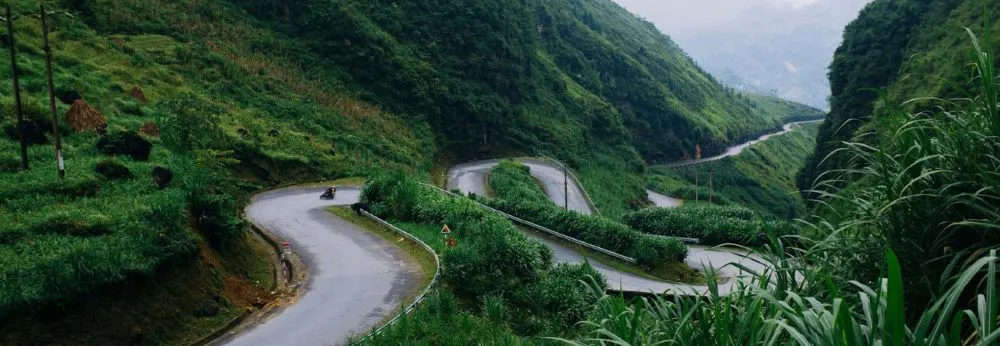
The Ultimate Ha Giang Loop Guide (2025): Itinerary, Map & Tips
2. How to get to Tham Ma Pass
Tham Ma Pass is located in Dong Van District, Ha Giang Province – roughly 10 kilometers (6.2 miles) from Yen Minh and 35 kilometers (21.7 miles) from Dong Van Town. The pass lies along National Highway 4C, the main route connecting Ha Giang City to the northern mountains.
To get there, start from Hanoi, you can take a sleeper bus or limousine van to Ha Giang City – a distance of about 300 kilometers (186 miles), with a travel time of 6 – 7 hours. From Ha Giang, continue north along Highway 4C for approximately 110 kilometers (68 miles). Tham Ma Pass appears midway through the Ha Giang Loop, a scenic journey often explored over 3 to 4 days by motorbike or private car.
Travel Tip: If you’re visiting from Central or Southern Vietnam, the fastest option is to fly to Hanoi first, then follow the route above.

3. Best time of year to visit
The best time to explore Tham Ma Pass is from October to December, when Ha Giang’s climate is cool, dry and ideal for travel. During this period, buckwheat flowers bloom across the hillsides, transforming the landscape into a mosaic of soft purples and pinks.
April to June is also a great time to visit, especially for those who enjoy clear skies and minimal rainfall. The weather is warm but pleasant at altitude, offering a refreshing contrast to the heat of Vietnam’s lowland cities. Early summer is perfect for motorbike travel and photography, with golden light stretching across the rugged terrain.
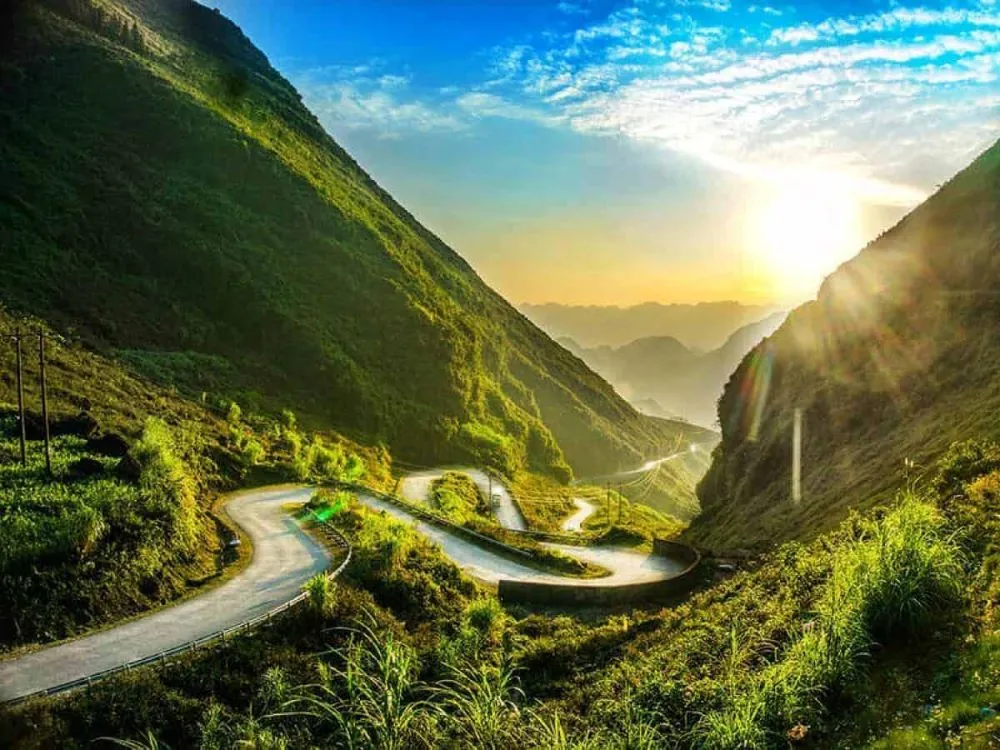
4. Unforgettable experiences along the pass
Here are three unforgettable moments you shouldn’t miss on your journey through Tham Ma Pass:
4.1 Snap stunning photos at the top of the pass
The summit of Tham Ma Pass offers a direct view of its signature S-shaped curve, best captured from a ledge just before the descent toward Van Chai. Visit between 7:00 – 9:00 AM for the most vibrant light, when morning mist settles in the valleys below. A wide-angle lens helps frame both the winding road and the dramatic limestone cliffs in a single, sweeping shot.

4.2 Meet local ethnic children selling fresh flowers
Along Tham Ma Pass, especially between 10 AM – 2 PM, you may meet H’Mong children from nearby villages offering bundles of wild sunflowers or buckwheat blossoms. These seasonal flowers are hand-picked from nearby hillsides. A small purchase supports their schooling and family needs and often leads to a warm, sincere moment of cultural connection.
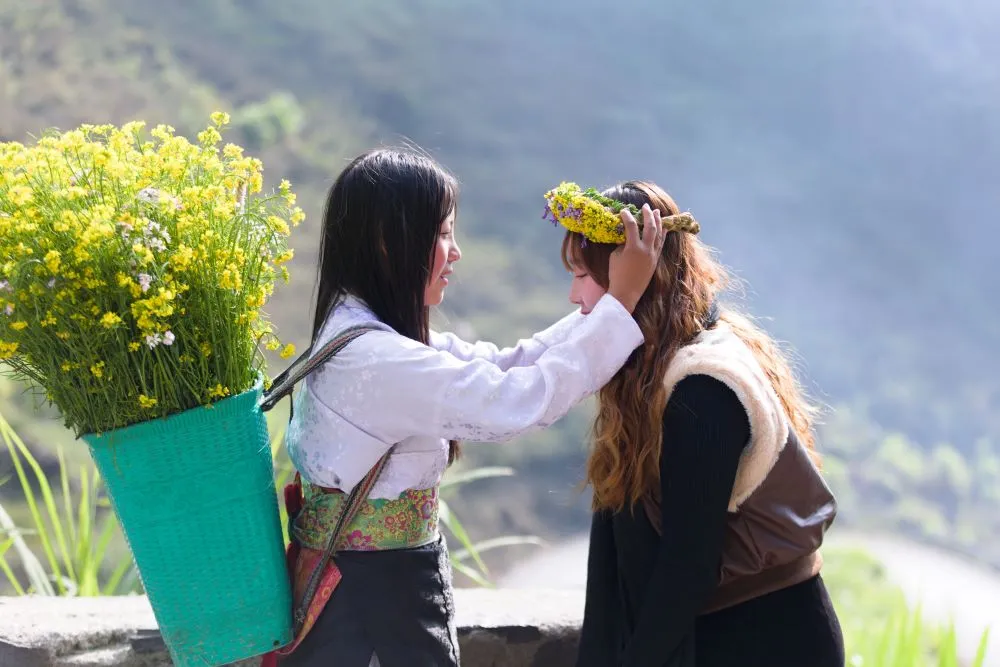
4.3 Get a glimpse into the daily life of the H’Mong community
In the hills near Lung Thau village, H’Mong women harvest corn on steep limestone plots using traditional baskets strapped to their backs. Men guide goats along rugged ridgelines, while clay stoves emit thin trails of smoke as families prepare lunch. These moments reveal a way of life built on endurance, skill and deep ties to the mountain landscape.
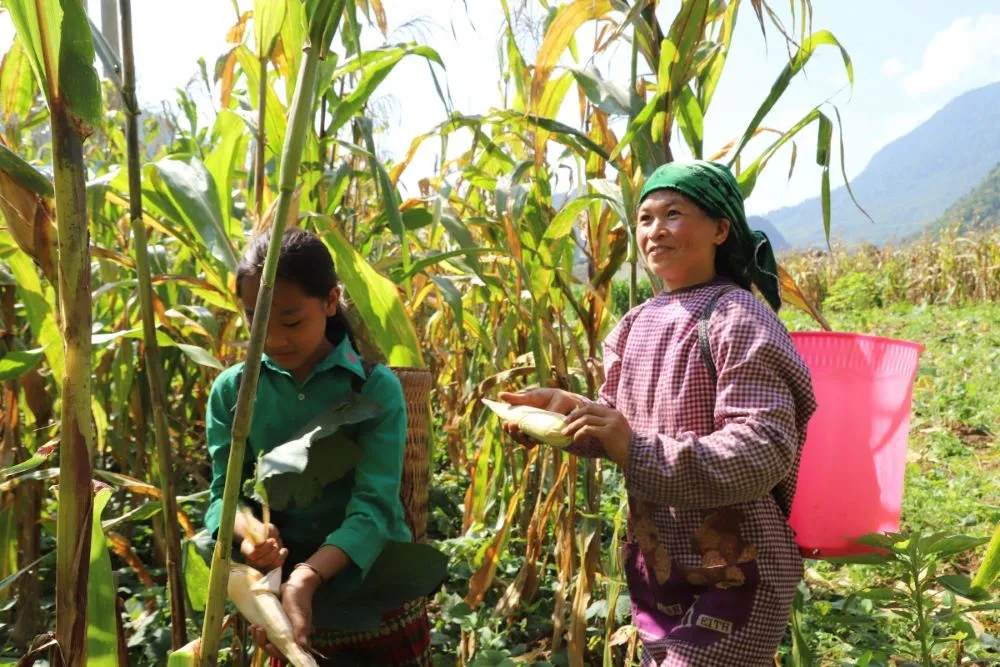
5. Nearby places worth visiting
Beyond Tham Ma Pass, the Ha Giang Loop continues to impress with landscapes and landmarks rich in culture and beauty. Here are three nearby places worth adding to your itinerary:
5.1 Quan Ba Heaven’s Gate and the Fairy Twin Mountains
Quan Ba Heaven’s Gate sits at 1,500 meters (4,921 feet) and marks the official entry to the Dong Van Karst Plateau. From this elevated pass, you can enjoy panoramic views of Tam Son Valley, cloud-covered limestone ridges and terraced rice fields. It’s a perfect sunrise stop and a memorable point early in the Ha Giang Loop, just before reaching Tham Ma Pass.
A short drive downhill leads to the Fairy Twin Mountains, two symmetrical limestone hills shaped like a woman’s breasts. Rooted in H’Mong legend, they symbolize a fairy’s gift left behind for her child. The viewpoint is about 2 kilometers (1.2 miles) toward Tam Son Town, marked by a discreet sign and stairway. Many riders miss it if they’re not watching closely.
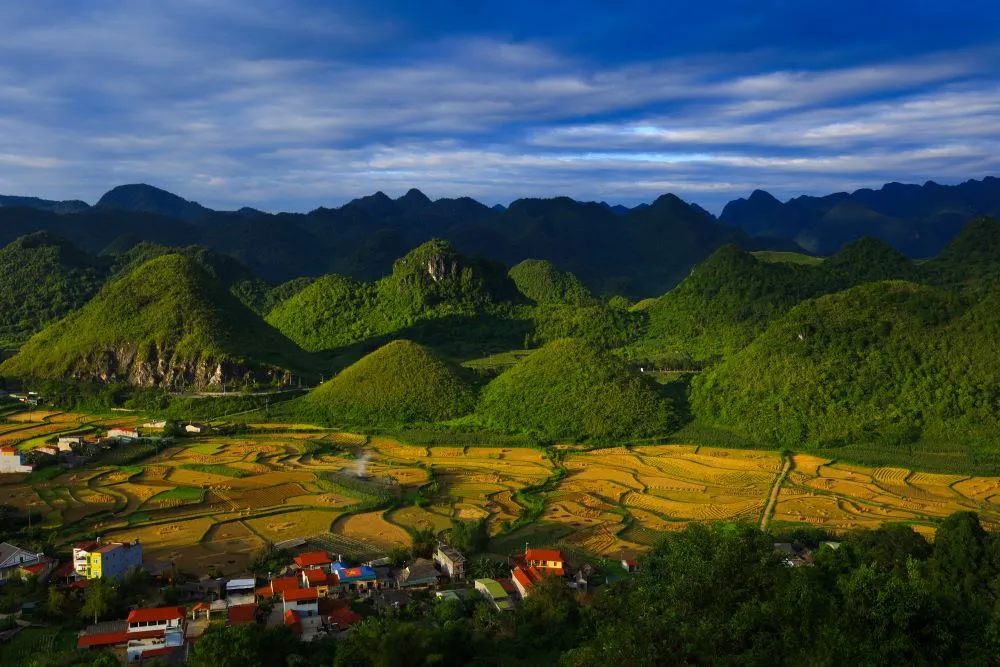
5.2 The flower-filled valley of Sung La
Sung La Valley, located along Highway 4C after Tham Ma Pass, is famous for its seasonal flower fields and traditional H’Mong houses. From October to December, the valley bursts with buckwheat blossoms, painting the hills in soft pink and purple hues. This tranquil village also served as a filming location for Story of Pao, offering visitors a blend of cinematic scenery and authentic mountain life.
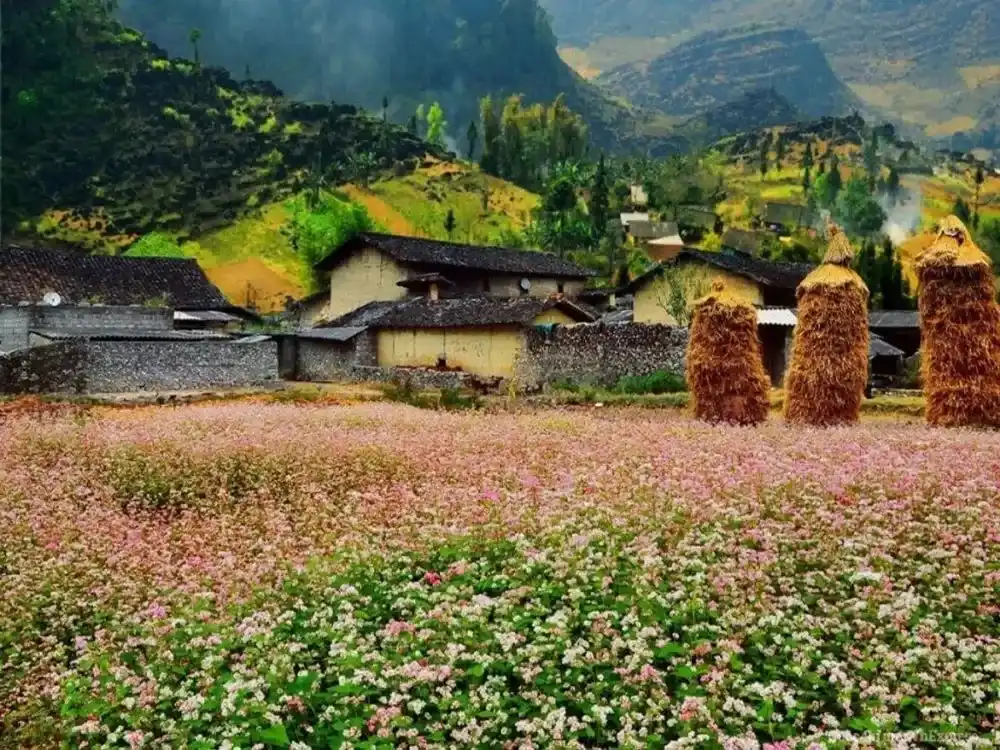
5.3 The H’Mong King’s Palace in Sa Phin
Continuing northeast after Tham Ma Pass and Sung La Valley, you’ll reach Sa Phin Commune, home to the H’Mong King’s Palace. This stone mansion, built in 1914 for Vuong Chinh Duc, sits in a quiet valley surrounded by rocky peaks and is a must-see for history lovers on the Ha Giang Loop.
The architecture reflects both French colonial and Chinese Qing influences. Inside, you’ll find preserved artifacts, old photos and wooden carvings that tell the story of H’Mong leadership during the early 20th century. It’s about 15 kilometers (9.3 miles) from Sung La and often included in guided tours.

4. Suggested travel itinerary with Phieu Travel
Phieu Travel includes Tham Ma Pass early on day one, right after Quan Ba Heaven’s Gate, so visitors can capture the iconic S-curve under the best morning light. Unlike rushed itineraries, Phieu allows time to stop, meet local children and experience authentic highland life. Whether you choose a motorbike or car, solo trip or group tour, Phieu offers fixed schedules or custom routes designed around your interests.
Why Tham Ma Pass is better with Phieu Travel:
- Timed visits for ideal light and scenic photography.
- Extra time to interact with H’Mong children and communities.
- Multiple tour formats: 2D1N, 3D2N, 4D3N or fully personalized Ha Giang Loop itineraries.
- Free early check-in at Phieu Homestay before your tour.
- Flexible transport: self-ride motorbike, guided bike, or car.
- Solo traveler support and options for private or group tours.
- Choose from self-drive, guided motorbike or car options.
- Solo-friendly and group-ready itineraries.

Ready to explore Tham Ma Pass your way? Whether you’re after epic views, cultural moments, or a flexible route through Ha Giang, Phieutravel.com has you covered. Message us today to start planning your personalized journey!
You Might Also Like:
- Discover the Charm of Du Gia: A Hidden Gem in Ha Giang
- Nho Que River – The Emerald Gem of Dong Van Karst Plateau
- 4 Days 3 Nights Ha Giang Loop tour: Slow down, see more, feel more


